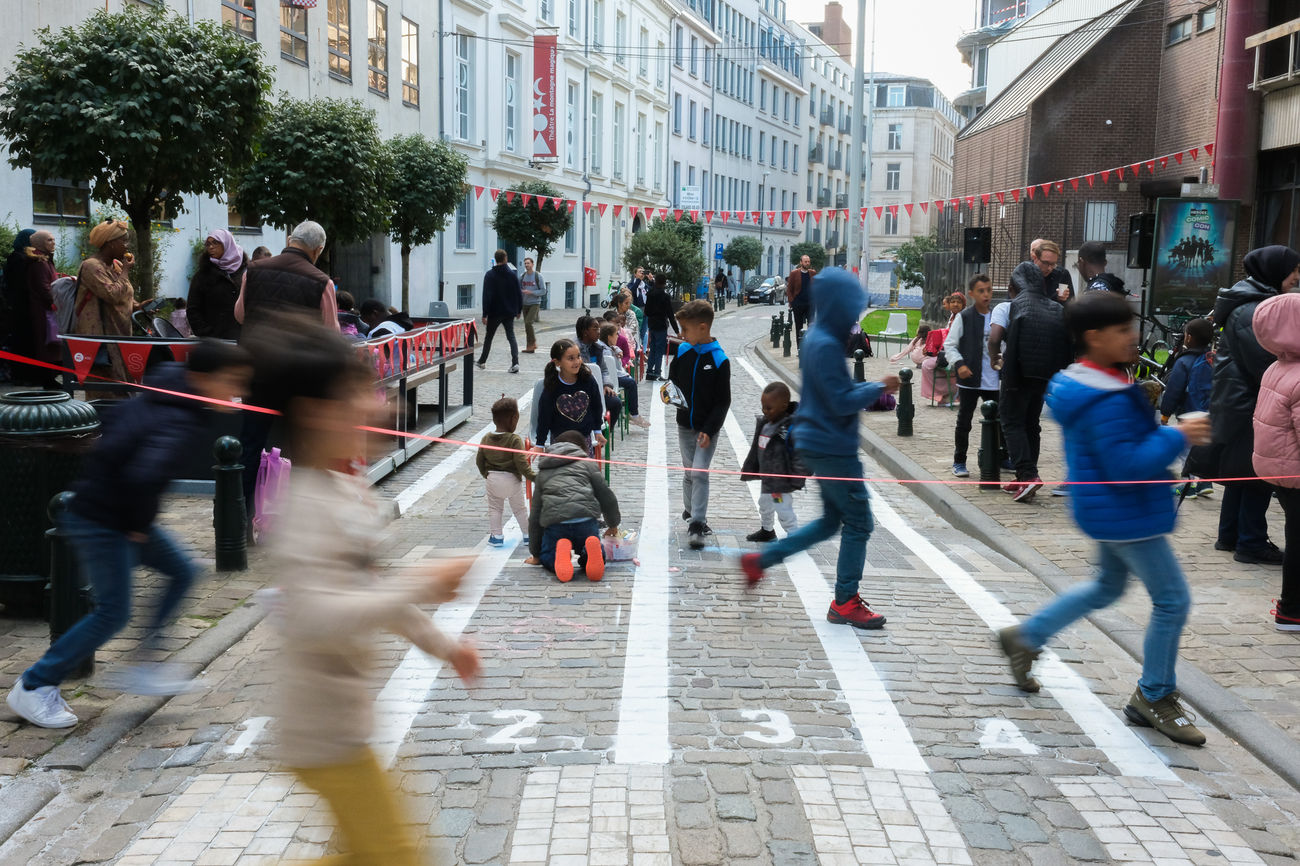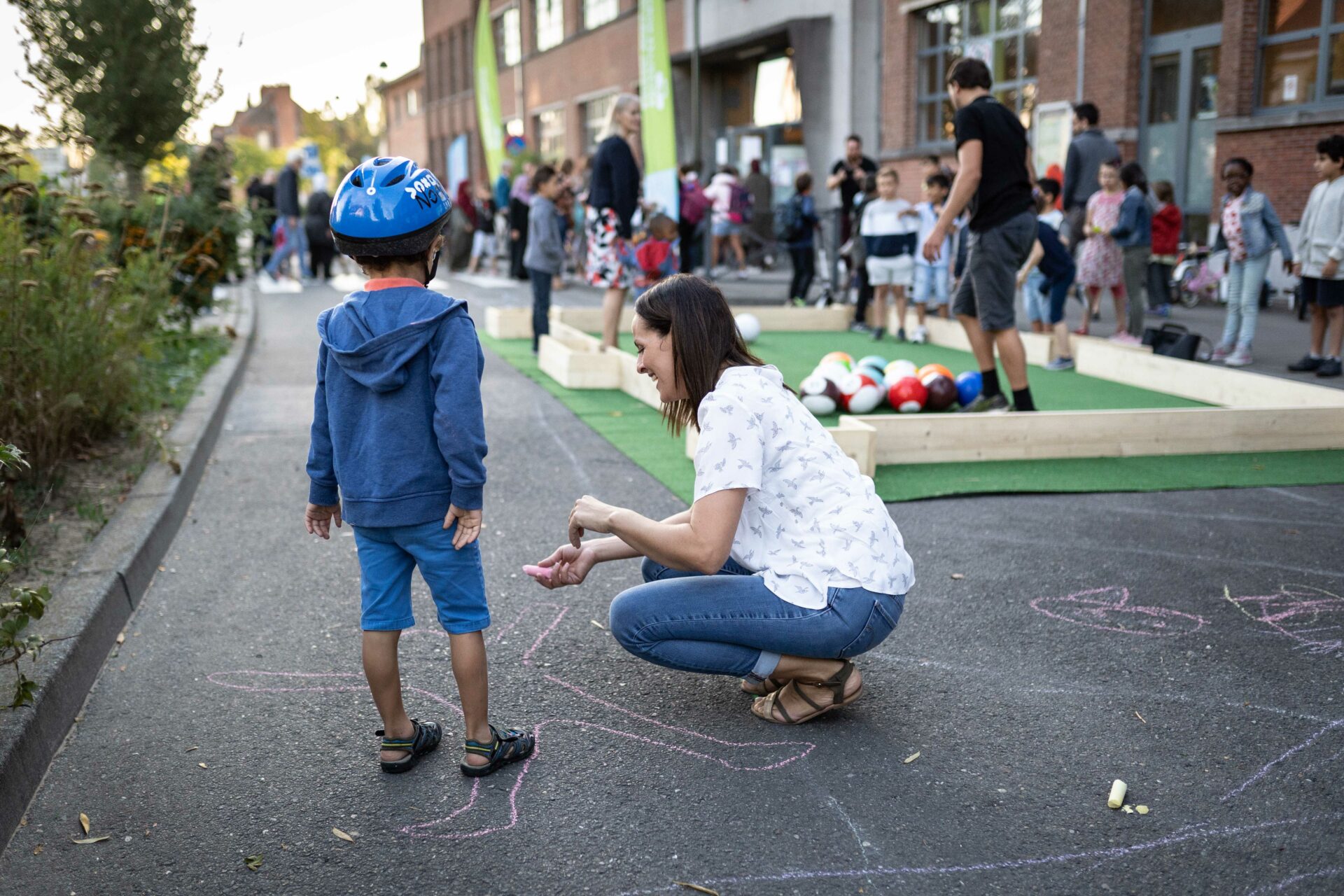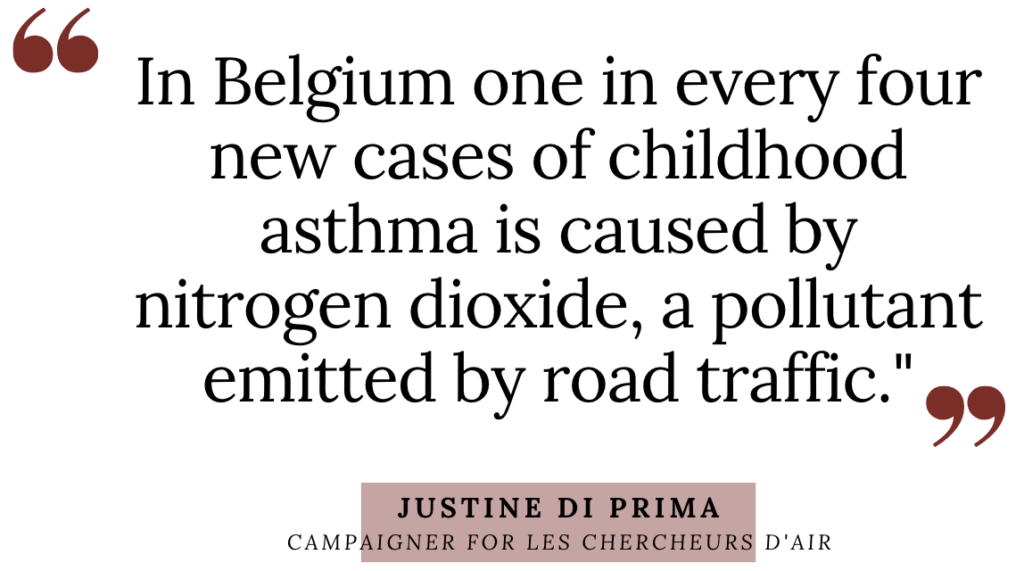Almost half of all nursery and primary schools in Brussels could be made safer for pupils but most municipalities fail to implement the system in place to protect children.
Traffic on the streets surrounding these buildings is often chaotic and dangerous, especially at the start and end of the school day when young people walk and cycle to school while motorists continue to pass by. The exhaust fumes they emit also have an impact on air quality, both in the surrounding area and in the schools and classrooms themselves.
With the aim of creating a safer and healthier environment here, several Brussels municipalities tried out the concept of school streets. This is a public road in the immediate vicinity of a school facility, that is at least temporarily closed to traffic by fences at the beginning and end of the school day, at best pedestrianized.

Credit: City of Brussels
But despite the legal framework for school streets already existing, only 43 of the 629 (less than 7%) nursery and primary schools in the Brussels-Capital Region have one. The finding followed a study by Les Chercheurs d'Air which found that almost 400 schools could easily have a school street, or even a fully pedestrianised street, if only they were more proactive.
The region's education institutes have consequently come under fire for not taking the health of their pupils seriously enough, with critics pointing out that almost 70% of Brussels schools could have safe streets, if only they took the necessary steps.
Doing nothing has a price
The majority of schools in Brussels are subject to levels of air pollution that exceed the recommendations of the World Health Organisation (WHO) – a major concern given that children are particularly vulnerable.
"This has a real impact on children's health. In Belgium one in every four new cases of childhood asthma is caused by nitrogen dioxide (NO2), a pollutant emitted by road traffic," Justine Di Prima, campaigner for Les Chercheurs d'Air, told The Brussels Times.
Di Prima stresses the benefits that this type of urban development can have in the vicinity of schools: NO2 concentrations can be reduced by up to 23%. Noise pollution is also lowered considerably, as is the risk of road accidents.

Credit: Cabinet Pascal Smet
"Doing nothing has a price. It costs human lives: 900 people die prematurely from air pollution every year in Brussels. It is also a cost for social security, as consultations with doctors, treatments, and so on. Finally, it also has an economic cost: when a child is ill, you have to look after them at home and take time off work."
By way of comparison, London has created more than 500 school streets since 2017, reducing nitrogen dioxide levels by up to 23%. There are also 200 such streets in Paris, around 40 of which are permanently closed to traffic and planted with vegetation.
"In Brussels, things are moving too slowly. Since 2018, only 43 school streets have been created. It is not enough. Children have the right to breathe clean air and to go to school safely," Di Prima said.
What's the hold-up?
To understand why school streets are not more widespread in Brussels, Les Chercheurs d'Air studied the layout of roads around each of the region's 629 nursery and primary schools. They took into account various criteria which would prevent a school street from being created, or the street from being completely closed off to traffic.
Obstacles include the presence of a police station, streets where a tram passes or key access roads for heavy goods vehicles. The presence of electric vehicle charging zones and reserved spaces for deliveries are considerations but don't prevent school streets from being created.
In addition, the study showed that a history of accidents in a school's vicinity or a widespread demand from parents and teachers will encourage creating school streets.
Taking restrictions into account, the study concluded that for 338 schools there are no major obstacles to closing road traffic at the time of school entrances and exits; 48 street sections could be pedestrianised in the short term.
"Our analysis shows that there could be ten times as many such streets," said Di Prima. "We are asking the Brussels region and municipalities to speed up the process."
Related News
- Cities are increasingly taking bold measures to combat noise pollution
- Air pollution worsened slightly in Belgium after the pandemic
Mobility Minister Elke Van den Brandt told The Brussels Times that she also believes that more of these streets are needed: "The number has already increased dramatically this legislature, by about one-third I think. So we are pushing in the right direction."
However, these schools are often located on municipal roads, meaning the Brussels regional government cannot act on the matter. "We need the municipalities' support for this," she concluded.


